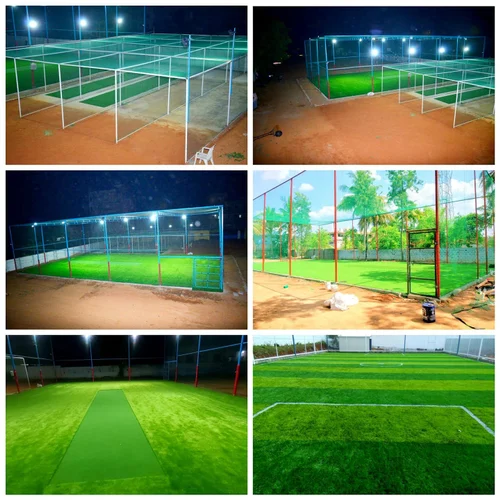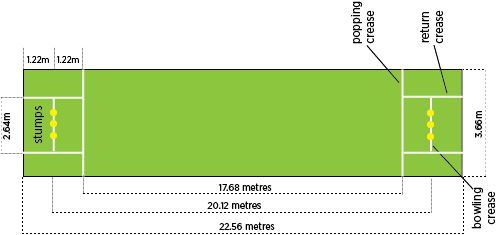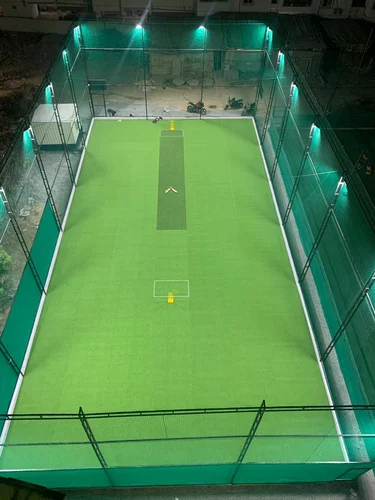Box cricket ground starts with creating a small, enclosed playing area., enclosed area where you can play the game. Here’s a step-by-step guide to help you set up a basic box cricket ground:
The making of box cricket ground:

1. Choose the Location for box cricket ground
- Space: Find a flat, open area that can be enclosed. It can be in a backyard, park, or any open space suitable for playing.
- Surface: Ensure the surface is level and safe. Grass, artificial turf, or even a hard surface like concrete can work, though grass or turf is preferable for safety and ball bounce.
2. Define the Boundaries in box cricket ground
- Walls or Barriers: Use walls, fences, or temporary barriers to enclose the area. The height and strength of these barriers are important because the ball will rebound off them.
- Size: The size can vary, but a common dimension is around 20 to 30 meters in length and 15 to 20 meters in width, depending on available space.

3. Prepare the Pitch for box cricket ground
- Pitch Area: Create a flat, even strip in the middle of the playing area. It should be about 6 to 8 meters in length (similar to a traditional cricket pitch).
- Surface: For a smooth pitch, consider using a hard surface or artificial turf. If using grass, ensure it is well-maintained and level.
4. Mark the Playing Areas
- Creases: Mark the batting and bowling creases on the pitch. Use paint, chalk, or markers to define the area where bowlers will deliver the ball and where the batsmen will stand.
- Boundary Lines: Define the boundary lines where runs will be scored if the ball hits the wall or barrier. You can use ropes, cones, or paint.
5. Set Up the Stumps
- Stumps: Place a set of stumps at each end of the pitch. They can be traditional wooden stumps, plastic stumps, or even makeshift ones like sticks.
- Wickets: Ensure they are securely positioned so they don’t fall over easily.
6. Install Lighting (if needed)
- Lighting: If you plan to play in the evening or at night, set up proper lighting around the ground. Ensure the area is well-lit for safety and visibility.

7. Create Seating and Spectator Area
- Seating: Provide some seating around the ground for players and spectators. This can be simple benches or even portable chairs.
8. Safety Measures
- First Aid Kit: Keep a first aid kit handy for any minor injuries.
- Safety Gear: Ensure players wear appropriate safety gear like helmets, pads, and gloves.
9. Test the Setup
- Play a Trial Game: Once everything is set up, play a few trial games to test the boundaries, pitch, and overall setup. make any changes needed to ensure the game is fun and runs smoothly. This means tweaking things like the pitch, boundaries, or equipment based on how the game plays out to make sure everything works well.
10. Maintenance
- Regular Upkeep: Regularly check and maintain the pitch, boundaries, and equipment to keep the ground in good condition for ongoing play.
By following these steps, you can create a functional and enjoyable box cricket ground tailored to your needs.
